If you’re new to bird feeding, it’s overwhelming to find yourself at your local hardware or bird store with the plethora of bird seed options in front of you. Every bag of bird seed or package of suet has pictures of beautiful, colorful birds promising that it will bring them to your yard.
This isn’t always the case. Not all bird feed is created equal.
Let’s say you’re looking to make your first bird feed purchase…what should you prioritize? Where should you start? I’ve compiled the power rankings below, from worst to best, of which bird seed is worth your time and money.
I’ve been a bird feeding enthusiast since 2020 and have experimented with every type of seed on this list extensively. These comments and rankings are based on my experiences, but also cross-referenced with sources like the Cornell Bird Lab of Ornithology.
Disclaimer: Some links found on this page might be affiliate links. If you click an affiliate link and make a purchase, I might earn a commission. As an Amazon Associate I earn from qualifying purchases.
#10 Bird Seed – RED MILO

#9 Bird Seed – CRACKED CORN
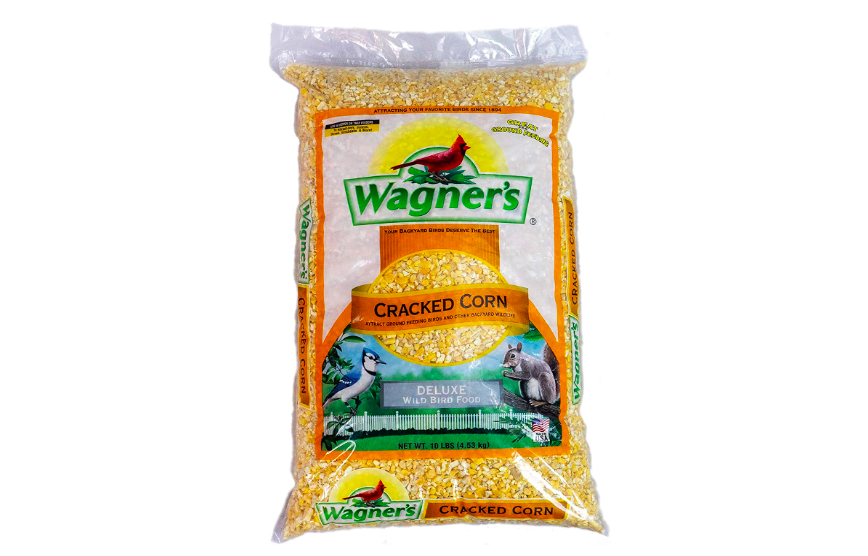
Cracked corn isn’t great unless you’re looking to feed squirrels, Ducks, Turkeys, Geese, and potentially Blue Jays (peanuts are better) from the ground. If you find feeding critters to be fun, buy yourself a big bag of cracked corn, dump it into a slightly elevated ground feeder and go to town!
The Cornell Bird Lab says you can also mix cracked corn with white milo on the ground to draw in additional ground-feeding sparrows.
Cracked corn is cheap. It’s easy to buy a bunch of it. However, it also spoils quickly, especially if it gets damp. Keep it in a dry space, and a slightly above-ground feeder. It’s also often used as a cheap filler in a lot of bird seeds. I used to buy bird seed mixes with cracked corn but avoid it now. I usually find it tossed to the ground in favor of other seeds.
My verdict: This stuff isn’t worth it…unless you want to feed ducks, geese, and critters on the ground.
#8 Bird Seed – ANY KIND OF FRUIT MIX
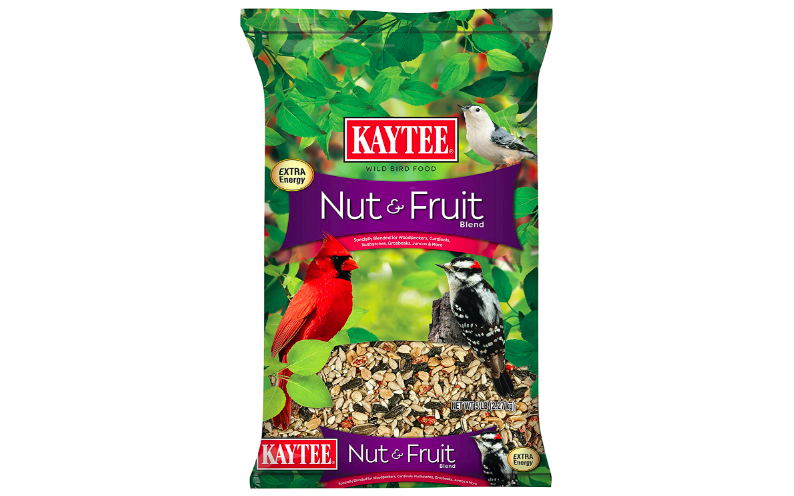
Bags of fruit bird mix I purchase usually have pictures of waxwings and tropical birds on it like it’s some sort of magic elixir for hard-to-get birds at your feeder. Unless I’m doing it wrong, I’ve had no success drawing in interesting birds with these mixes.
The base of these mixes usually has something useful like peanuts and/or sunflower seeds (like the example from Kaytee above). So, they aren’t a complete loss. I just haven’t had any luck paying a premium for this seed to draw in unique birds. You’re much better off buying sunflower seed or peanuts to draw in birds at a cheaper price.
#7 – WHITE MILLET
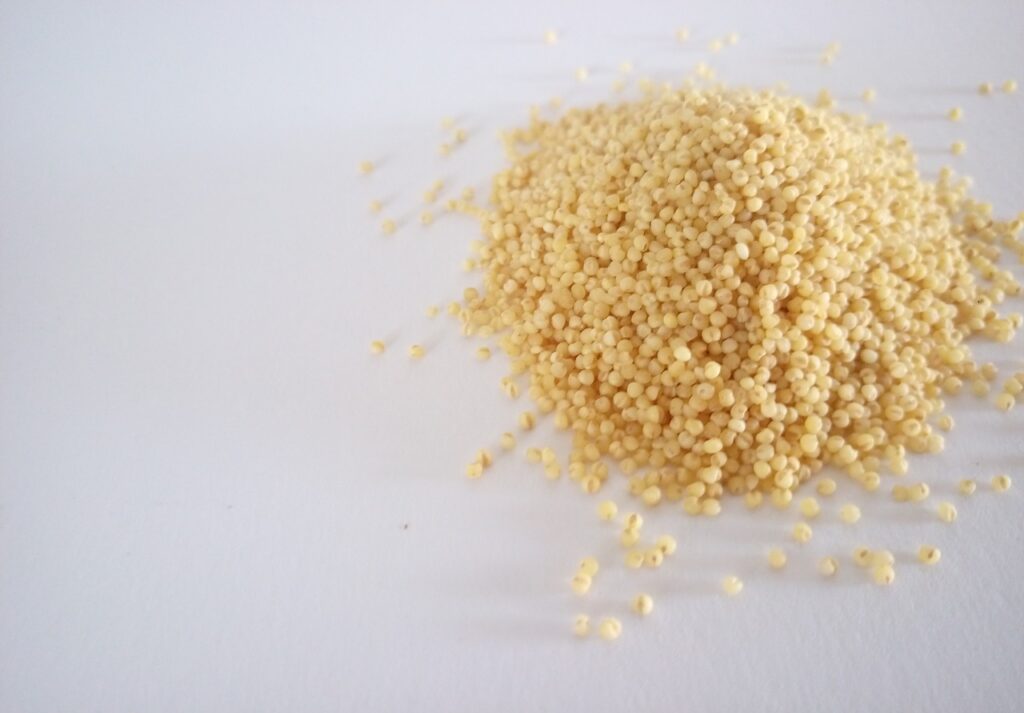
White millet (different from red milo listed above) is a small round grain and I view it as a double-edged sword.
On the one hand, white millet is beloved by birds like Mourning Doves, native Sparrows, Juncos, and Indigo Bunting when they’re migrating in the spring. But…it’s also beloved by the invasive House Sparrow.
Related Content on Dan’s Bird Bites: How to Attract Mourning Doves to Your Yard
My advice is to sprinkle millet on the ground or add a little bit of to your regular bird feed in the spring, fall, and winter to draw in desirable birds. Millet is also really cheap…so it has that going for it.
Avoid serving white millet in the summer. I’ve found it doesn’t draw in too many unique birds other than house sparrows at that time of year.
#6 – NYJER SEED
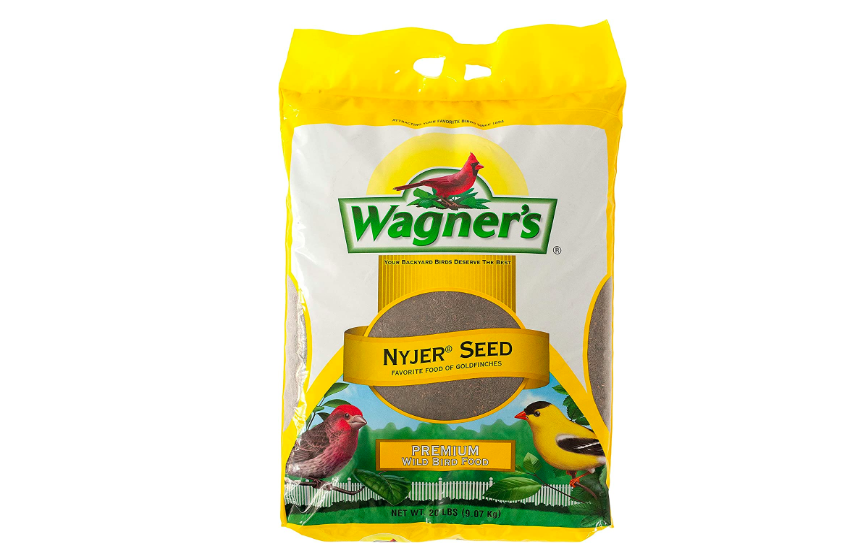
Nyjer (aka “thistle seed”) is a great option for Finches…and that’s about it.
You can buy nyjer seed on its own (above) or in a “Finch mix” with sunflower chips also added in. Either option is sure to appeal to Goldfinches, House Finches, Redpolls, and Chickadees (sometimes).
Nyjer is lower on this list because it doesn’t appeal to a ton of birds, it’s expensive, and it spoils quickly. It’s also so small that you’ll want a separate feeder with small ports for it. You can also serve it in a nyjer seed sock feeder as a cheaper option.
Nyjer is worth your time and money if you already offer the seeds below and want to add another option for Finches, but I wouldn’t prioritize it if you’re new to this hobby.
#5 – MEALWORMS

Mealworms are the larva of mealworm beetles. They are a fantastic supplemental protein addition to your bird feeding station.
Dried mealworms have quickly become the favorite choice for my regular Black-Capped Chickadee guests. Titmice and Wrens also enjoy mealworms.
Related Content: Review: Kaytee Mealworms are Fantastic for Bird Feeding
The holy grail of putting out mealworms is to put out the live version in a flat tray to attract Eastern Bluebirds in the spring. It’s the only reliable food you can put out to draw them in, according to the Cornell Bird Lab.
#4 – SAFFLOWER SEED
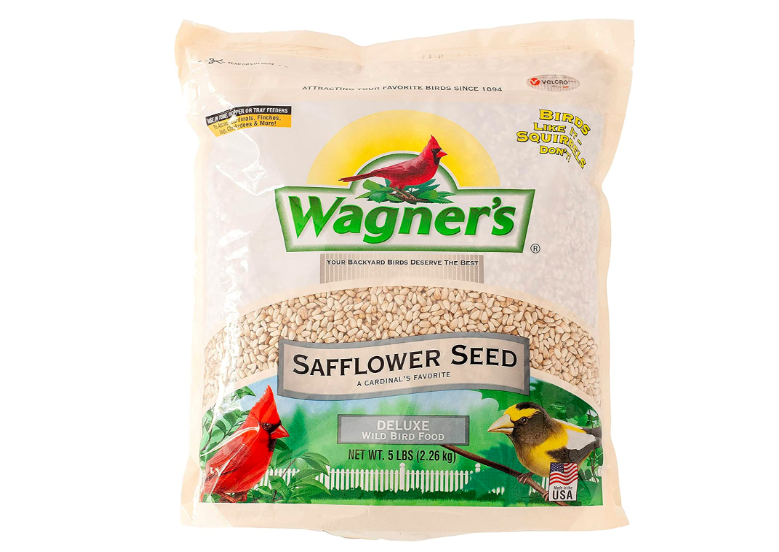
You’ll often find safflower combined with sunflower seed to create “Cardinal blends” of birdseed. But you can also buy it solo.
Safflower is a great option if you’re having squirrel problems. It’s bitter and doesn’t appeal to them much. The invasive House Sparrow also isn’t a fan of this seed. Unfortunately, I’ve found that chipmunks like safflower, so it’s not critter-proof.
Cardinals, Finches, Doves, Chickadees, and Grosbeaks all like safflower seed. However…I’ve found sunflower seed to be a much better investment. Only purchase safflower by itself if you’re having problems with squirrels or House Sparrows.
Related: 5 Ways to Attract Cardinals to Your Bird Feeder
#3 – PEANUTS

Peanuts are an underrated option in your bird feeding arsenal. They’re high in protein and fat. It’s quickly become one of my favorites to offer to birds, especially in the winter.
I have the highest variety and number of birds at my station when I’m offering peanut bits in a separate feeder.
Peanuts are especially great if you’re gunning to attract Jays to your yard. I’ve found they like the shelled variety, in particular. Whenever I put peanuts out, Blue Jays follow, sometimes in bunches of two to three. Chickadees, Nuthatches, Titmice and Cardinals also love peanuts.
The only downside to peanuts is, no surprise, that squirrels and chipmunks love them. I’d recommend putting peanuts out in a sturdy, squirrel-proof feeder to keep them away from critters.

#2 – SUET

Suet (usually made with beef fat) is a must-have at your bird feeding station. If you’re a beginner, this is where I would look to cheaply add more bird visitors to your yard.
Suet is fantastic for all sorts of Woodpeckers (Hairy, Downy, Red-Bellied, Pileated, etc.). I get Downy Woodpeckers every day visiting my suet feeders. You can also buy suet with insects or fruit to draw in birds like orioles.
Suet is cheap. It costs $1 to $5 for a cake of it, which usually lasts me for a couple of weeks. A suet cage feeder will also only cost you a few bucks.
You can also buy suet logs for a tree log feeder. This is what I do! Woodpeckers absolutely love it. Here’s my current setup:
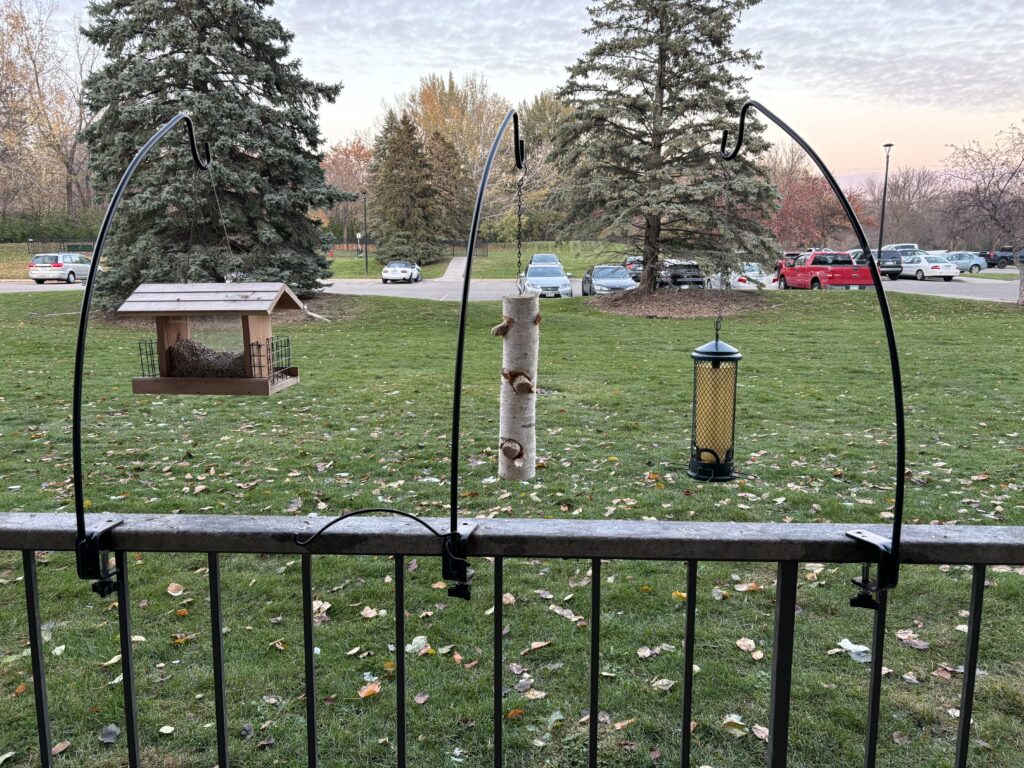
#1 – SUNFLOWER SEED
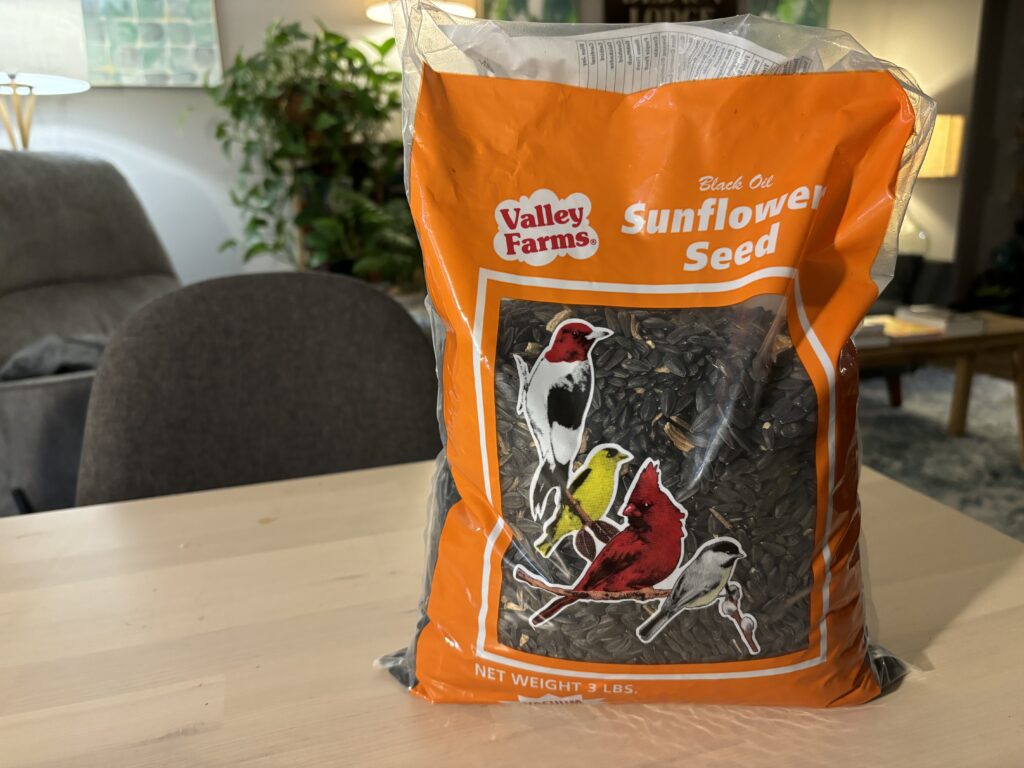
This is the best bird seed you can invest in. You should buy sunflower seed if you’re getting started in this hobby. I always have my trusty 30-pound bag of sunflower-based seed from Costco on hand and a bag of sunflower chips from my local Wild Bird Store.
Sunflower seed is relatively cheap compared to other bird feed if you go with the whole-shell version. The only downside is the shell remnants left over below your feeder.
Birds that like sunflower seed are: Cardinals, Chickadees, Grosbeaks, Woodpeckers, Finches, Jays, Titmice, Nuthatches.
Looking for more on bird feed? Check out this short video I recorded below!
If you like this article and want more details on how to attract specific species, be sure to check out my comprehensive guide to attracting all sorts of Minnesota Birds to your feeders
Leave any questions and comments you have below. Please consider sharing this story or telling a friend about it if it helped you. It means a lot to me!
Supplemental sources: Cornell Bird Lab Project FeederWatch, All Seasons Wild Bird Store (my favorite local shop in Minnesota).

Pingback:5 Tips to Attract Chickadees to Your Bird Feeder - BIRD BITES
Pingback:Get Started with Bird Feeding in Four Steps - BIRD BITES
Pingback:5 Time-Tested Ways to Attract Cardinals to Your Bird Feeder - BIRD BITES
Pingback:Ranking the Effectiveness of Squirrel Bird Feeder Deterrents - BIRD BITES
Pingback:My Experience and Review of Cole’s Flaming Squirrel Seed Sauce - BIRD BITES
Pingback:How to get Baltimore Orioles Visiting Your Bird Feeder -
Pingback:The Ultimate Bird Seed Guide - BIRD BITES
Pingback:6 of the Best Large Bird Feeders Money Can Buy - BIRD BITES
Pingback:How to Save Money While Bird Feeding - BIRD BITES
Pingback:How to Help Birds During the Winter - BIRD BITES
Pingback:Best Of The Best Bird Food: Top 4 Wild Seed Mixes According To Experts - Study Finds
Pingback:Best Of The Best Bird Food: Top 4 Wild Seed Mixes Most Recommended By Experts - Morojan
Pingback:Should I Buy Target Bird Seed? Everything you Need to Know (With Photos) - BIRD BITES
Pingback:The 4 Surprising Health Benefits of Bird Feeding - BIRD BITES
Pingback:Should I Feed Birds Bread? Everything You Need to Know - BIRD BITES
Pingback:Vacationing? Here’s How to Keep Your Birds Fed at Home - BIRD BITES